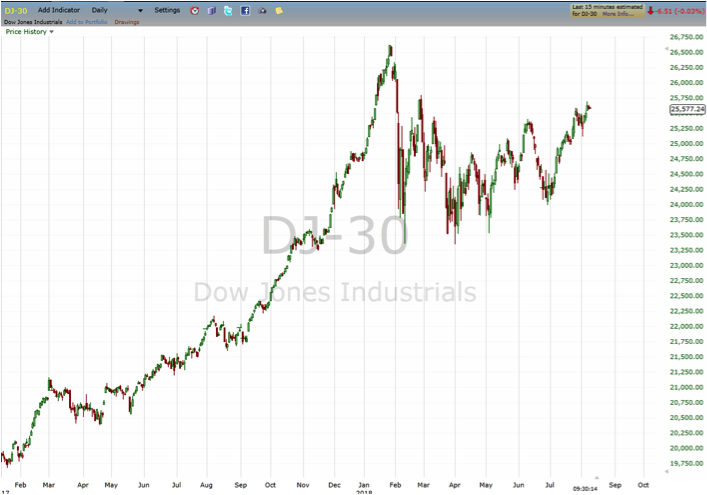 One of the most important things we can do when evaluating the stock market is to identify the direction the price is moving. This is what many investors will call the trend of the market. This trend, while not predicting the future, certainly suggests to us the direction the price is likely to move going forward.
One of the most important things we can do when evaluating the stock market is to identify the direction the price is moving. This is what many investors will call the trend of the market. This trend, while not predicting the future, certainly suggests to us the direction the price is likely to move going forward.
By knowing the trend, it can show us the types of trades we should be taking. If the trend is up, we will want to look for opportunities to buy stocks and if the trend is down, we will want to look for opportunities to short stocks. Buying and shorting stocks as well as buying call or puts should be done in the direction the markets are likely to move.
So, what is the trend? A simple definition is - price action that is moving predominantly in one direction or the other. When looking to define trends, we can use the following pattern:
Up Trend - Prices where the highs are moving higher while the lows are moving higher.
Downtrend - Prices where the highs are moving lower while the lows are moving lower.
No Trend - Prices where the highs are moving higher while lows are moving lower, or when highs are moving lower and lows are moving higher. This is sometimes referred to as a sideways or range bound market.

In the chart shown above, you can see the different trends that the DJ-30 has moved in over the last couple of years. The first half of the chart shows a very strong up trend, while the second half has shown a sideways and choppy moving market. Currently, we are seeing that the price is beginning to move outside of the recent highs, suggesting another uptrend to the markets. Notice how the highs have been getting higher while the lows have been moving up also.
So, what does that mean for the market through the end of this year? Well, with an uptrending price action, we would expect to see the market remain in a bullish direction. This doesn’t mean we won’t see the price drop, just that with the current trend, price is likely to remain strong.
While the chart direction tells us what has happened, it can’t tell us what is going to happen down the road. Currently, there are many who feel the markets are overvalued and may be nearing a point where they may experience a more significant pull back in price. Whether you look at fundamental indicators such as the price/earnings ratio, price/sales ratio or the price/book ratio, which all suggest an overvalued market, or simply look at the highs that have been made in the market recently, you can see why there may be some concern.
While it’s good to be cautious, you can mitigate the effects that a down market may have by using good risk management and knowing how much you should be risking in each trade you take. You can also be prepared to take advantage of a down market by watching the charts to see, if and when they begin to trend downward, once they do you can place trades that take advantage of a bearish market. Until then, don’t become too concerned because the market can continue to move higher for an extended time frame.
While we don’t know what will happen in the future, we do know what is happening right now. Take some time to review the markets on a daily basis so you can see the strength or weakness that is developing. Identifying the trend as up or down is key in helping you know what to trade as well as when to trade it. Let the charts show you when the markets are beginning to change, then follow the charts.
